
The Académie Julian was a private art school for painting and sculpture founded in Paris, France, in 1867 by French painter and teacher Rodolphe Julian (1839–1907) that was active from 1868 through 1968. It remained famous for the number and quality of artists who attended during the great period of effervescence in the arts in the early twentieth century. After 1968, it integrated with ESAG Penninghen.

Jean-Léon Gérôme was a French painter and sculptor in the style now known as academicism. His paintings were so widely reproduced that he was "arguably the world's most famous living artist by 1880." The range of his oeuvre included historical painting, Greek mythology, Orientalism, portraits, and other subjects, bringing the academic painting tradition to an artistic climax. He is considered one of the most important painters from this academic period. He was also a teacher with a long list of students.
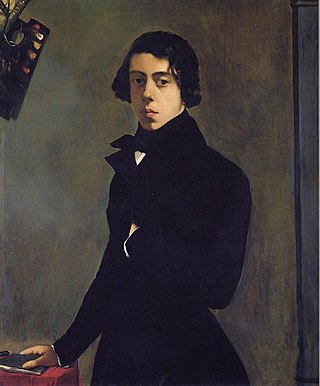
Théodore Chassériau was a Dominican-born French Romantic painter noted for his portraits, historical and religious paintings, allegorical murals, and Orientalist images inspired by his travels to Algeria. Early in his career he painted in a Neoclassical style close to that of his teacher Jean-Auguste-Dominique Ingres, but in his later works he was strongly influenced by the Romantic style of Eugène Delacroix. He was a prolific draftsman, and made a suite of prints to illustrate Shakespeare's Othello. The portrait he painted at the age of 15 of Prosper Marilhat makes Chassériau the youngest painter exhibited at the Louvre museum.

Maurice Boitel was a French painter.

Jean-Joseph Benjamin-Constant, born Jean-Joseph Constant, was a French painter and etcher best known for his Oriental subjects and portraits.

Nasreddine Dinet was a French orientalist painter and was one of the founders of the Société des Peintres Orientalistes [Society for French Orientalist Painters]. He became so enchanted with North Africa and its culture, that he converted to Islam, and was proficient in Arabic. In addition to his paintings, he translated Arabic literature into French.
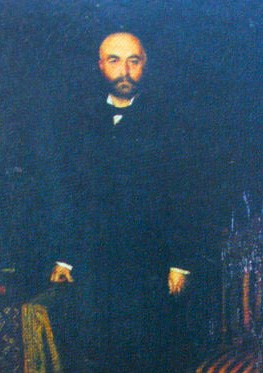
Sarkis Diranian was an Armenian orientalist painter. Originally from the Ottoman Empire, he was established for many years in Paris.
The Société des Peintres Orientalistes Français was an art society founded in 1893 to promote not only Orientalism but also the travel of French artists in the Far East.
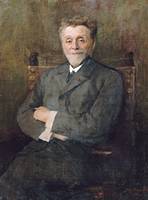
Léonce Bénédite was a French art historian and curator. He was a co-founder of the Société des Peintres Orientalistes Français and was instrumental in establishing Orientalist art as a legitimate genre.

Paul Alexandre Alfred Leroy was a French painter noted for Orientalist works. He was a founding member of the Société des Peintres Orientalistes Français and designed the Society's first logo.
The term "peintres voyageurs" is a recent term (1993) given by some art historians to the large and diverse group of itinerant French artists - who in many cases spent more time travelling in the French colonies and the Far East than resident in France - from the end of the 19th century to the outbreak of World War II and the ensuing end of the colonial era.

Albert Lebourg, birth name Albert-Marie Lebourg, also called Albert-Charles Lebourg and Charles Albert Lebourg, was a French Impressionist and Post-Impressionist landscape painter of the Rouen School. Member of the Société des Artistes Français, he actively worked in a luminous Impressionist style, creating more than 2,000 landscapes during his lifetime. The artist was represented by Galerie Mancini in Paris in 1896, in 1899 and 1910 by : Galerie Bernheim-Jeune, 1903 and 1906 at the Galerie Paul Rosenberg, and 1918 and 1923 at Galerie Georges Petit.

Georges Gasté is a French Orientalist painter and photographer.

Jan-Baptist Huysmans or Jean Baptiste Huysmans, was a Belgian painter known for his Orientalist scenes. He led a peripatetic life style and travelled and worked in many countries.

Léon Cauvy was a French Orientalist painter.

Victor-Pierre Huguet was a French Orientalist painter.
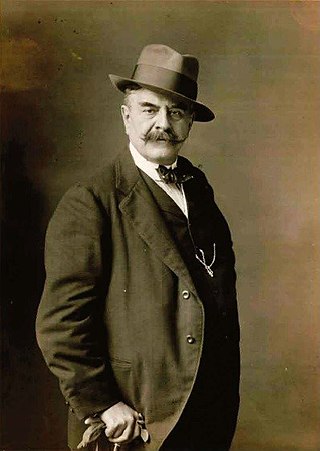
Jean Maurice Bompard was a French Orientalist painter; one of the founders of the Société des Peintres Orientalistes Français.

Charles-Émile Vacher de Tournemine was a French painter who specialized in Orientalist scenes.

Hocine Ziani is an Algerian painter and artist in plastic arts.
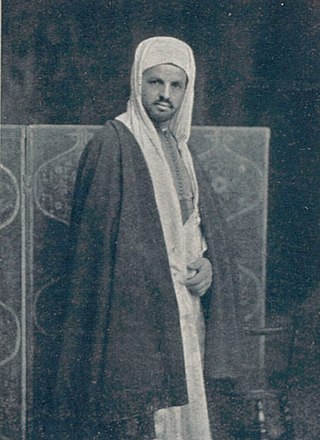
Azouaou Mammeri, also known as Si Azouaou Mammeri, was an Algerian painter born in 1890 or 1892 in the village of Taourirt-Mimoun which was part of Aït Yenni. He died on September 17, 1954, in Aït Yenni.



















